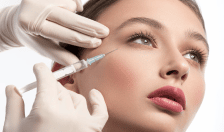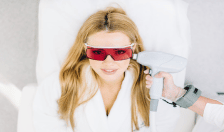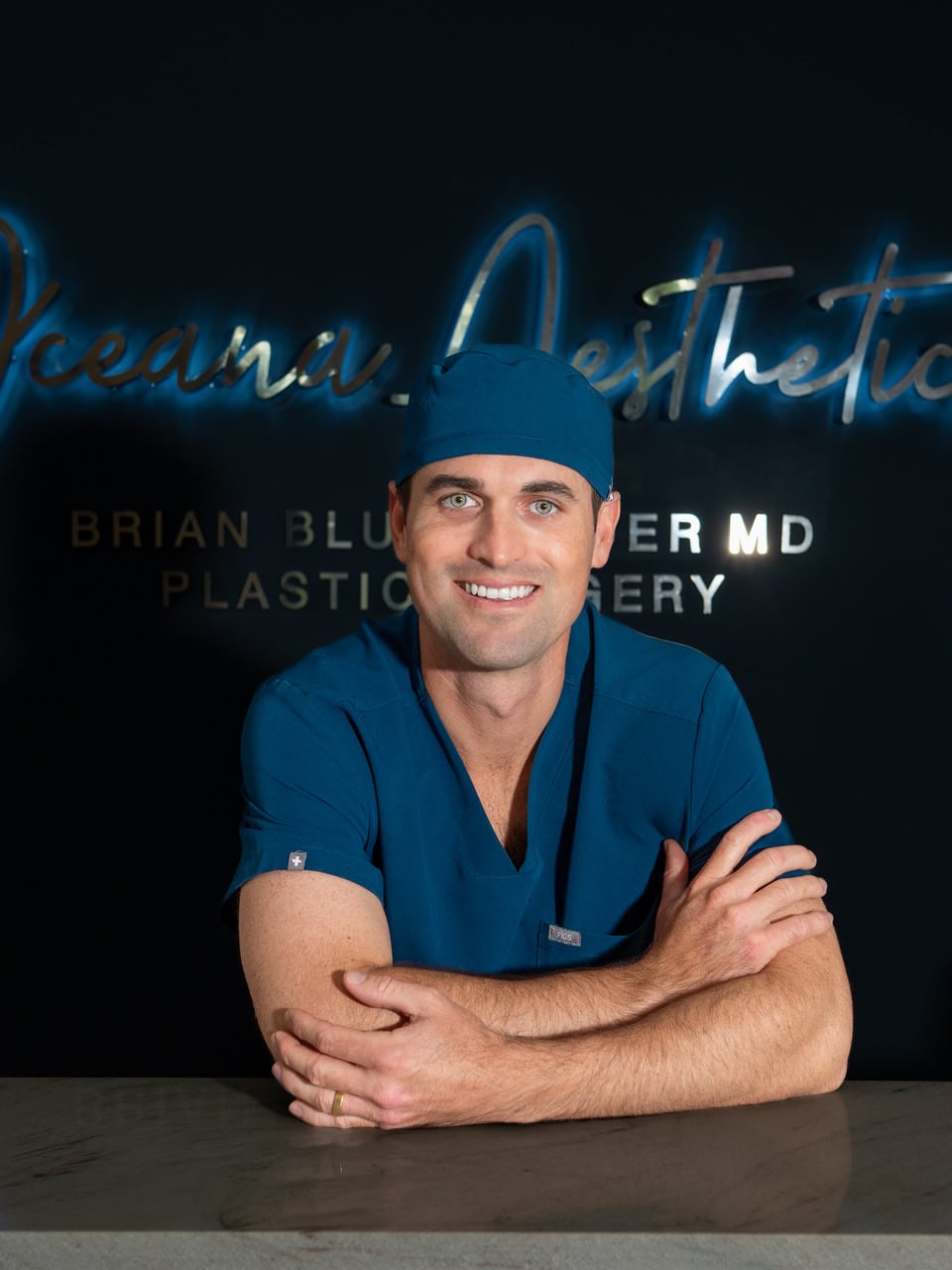
If you’re not keen on getting plastic surgery, but you still want to get rid of fine lines, wrinkles, and even treat hair loss, then Platelet-Rich Plasma may be the best course of action for you. Learn more about this process by reading our article.
Many people find that they want to improve their appearance. But not everyone is ready to commit to invasive plastic surgery procedures. Perhaps that’s why the number of minimally invasive cosmetic procedures performed each year has increased by a dramatic 200% since the year 2000.
Minimally invasive cosmetic procedures can give you the results that you’re wanting without the intense experience of plastic surgery. One such treatment option is called platelet rich plasma therapy.
Platelet rich plasma therapy has a number of different applications. These range from wrinkle treatment to pain relief. But what exactly is PRP? How does the treatment work? What are the potential side effects?
We’re going to answer all these questions and in this article; keep reading to learn more about PRP therapy.
What Is Platelet Rich Plasma?
Plasma itself is a component of blood. Plasma is essentially the liquid that blood is made of. It’s actually the largest component of blood making up 55% of it.
Plasma carries red blood cells, white blood cells, and platelets throughout your body.
So what are platelets? Platelets are another component of blood that helps with clotting, inflammation, and wound healing.
When you get a cut, or injure a blood vessel, or any other type of injury, platelets will gather at the site of the injury. They help promote wound healing, begin clotting blood, and stop bleeding.
Thinking about what we’ve talked about so far, platelet rich plasma is simply combining plasma and a high amount of platelets. Platelet rich plasma doesn’t contain red or white blood cells; it’s simply blood plasma with a high concentration of platelets.
What Is Platelet Rich Plasma Therapy?
Platelet rich plasma therapy will take a patient’s own plasma and platelets. This solution promotes wound healing, tissue repair, and other cosmetic benefits.
There are two different types of PRP therapy: PRP injections and PRP microneedling.
PRP Injections
PRP injections will take your specific PRP and directly inject it into the problem area to get the benefits of this type of therapy. This can cause swelling in the injection area along with some bruising.
Larger PRP injections are usually used to treat tissue damage, pain, and other types of wounds.
PRP Microneedling
Microneedling is another type of injection. But instead of a single large needle injection, many “micro” needles are used to inject the PRP into superficial skin.
PRP microneedling is a great option for those looking for certain cosmetic benefits. These could include wrinkle reduction and skin tightening. Some patients find that this induces some inflammation that subsides after a few days.
How Do You Get Platelet Rich Plasma?
We mentioned earlier that PRP is obtained from the patient being treated. The patient’s blood is drawn and it is then spun quickly in a machine called a centrifuge. This will separate out the plasma and the platelets from the other parts of blood (like red and white blood cells).
This allows for the separation of the platelets from the other parts of blood. It also results in a much higher concentration of platelets, which is necessary for this type of treatment.
How Does a PRP Treatment Work?
Platelets are able to help promote wound healing, reduce inflammation, and heal tissue damage. PRP treatments can be used to speed up these processes in problem areas.
By injecting a high concentration of these wound healing platelets directly into an area, it’s theorized that they can help induce healing quicker and more efficiently than natural platelets alone.
PRP treatments can be used for cosmetic purposes as well. Injecting PRP into areas with wrinkles or loose skin can help promote skin rejuvenation and tightening. Platelets can help the skin look smoother, tighter, and more youthful because of the wound and tissue healing properties and collagen production.
What Can PRP Therapy Be Used For?
We’ve already gone over a few general applications of PRP therapy. But there are actually a number of different conditions that can be treated with PRP injections or PRP microneedling.
Prevent Hair Loss
Injecting PRP directly into the scalp can help prevent hair loss. Inflammation in the scalp can induce hair loss. So, the anti-inflammatory properties of PRP can help reduce this inflammation and potentially help stop hair loss.
Not only can PRP help prevent hair loss, but there was also a study showing that men who underwent PRP treatment actually grew more hair compared to men who did not undergo the treatment.
While there isn’t a lot of data on this subject, it’s definitely a common treatment method for hair loss. It’s also had some promising results.
Promote Tissue Healing
One of the most popular benefits of PRP is tissue healing. Many athletes utilize this treatment to help heal sore muscles, tendons, ligaments, and more.
An ultrasound machine will be used during the treatment to better visualize the injured area. This way, the doctor can inject the PRP in the perfect spot to heal any injuries or soreness in that area.
Platelets will then promote tissue healing and reduce inflammation in the injured area.
Skin Benefits
The cosmetic benefits of this type of treatment mostly involve skin improvements. Inflammation reduction can help your skin to look smoother, less puffy, and give it an overall more youthful appearance.
PRP therapy can also help to tighten loose and wrinkled skin by stimulating collagen, which is one of the top worries for many men and women. In fact, it’s estimated that 18 months of our lives are devoted to worrying about skin health, especially wrinkles.
This safe and natural treatment can help skin look younger, brighter, and smoother. This will give your skin the boost it needs without surgical intervention.
Reduce Inflammation
We’ve mentioned some of the effects that come from PRP’s ability to reduce inflammation, but let’s look at some of the specifics.
Inflammation is our body’s natural response to injury. When we are injured, or our body thinks we are injured, that area will become inflamed. This means there will be swelling, redness, soreness, pain, and stiffness.
While inflammation can be beneficial for treating injury, excessive or abnormal inflammation has also been linked to a number of chronic diseases including:
- Cancer
- Arthritis
- Allergies
- Asthma
- Heart Disease
Reducing inflammation with PRP therapy can help diseases that are affected by inflammation. It can also help any injuries that are abnormally or excessively inflamed feel less sore and tender.
This combined with the healing properties of PRP will help promote a faster and less painful recovery from an injury.
Pain Relief
Injuries, especially those that are inflamed, can be painful, sore, and stiff. A few different studies show the benefits PRP therapy treatments can have on different types of injuries.
One study showed how PRP therapy can help reduce pain for muscle injuries. This specific study looked at tendon issues in athletes.
But the general conclusion was that PRP therapy can help reduce pain in tissue injuries, which makes sense considering the information we’ve already discussed in this article.
A second study focused on pain relief as a result of the anti-inflammatory properties of PRP treatment. This study found that PRP therapy significantly reduced the pain felt by patients suffering from osteoarthritis.
We should note that these were smaller studies. However, their results are exciting and match the general consensus of patients that undergo PRP treatments.
Side Effects of PRP Therapy
There are a few side effects you could experience after getting PRP therapy treatments. Since this treatment is performed via injections, you can experience mild pain or soreness around the injection site.
Some patients report mild bruising around the injection site that usually goes away within 1-2 days after the treatment.
Your Guide to PRP Therapy: Wrapping Up
Platelet Rich Plasma therapy might sound like something scary that’s only done in hospitals. But it’s actually a common and minimally invasive procedure that can:
- Have your skin looking younger
- Make your muscles feel better
- Give your body a boost of platelet power
If you’ve been looking for something that can help rejuvenate your skin without having to opt for plastic surgery, PRP therapy treatments are for you.
We can help rejuvenate your skin without having to opt for plastic surgery
An experienced member of our team will answer any questions you may have
Book Appointment













